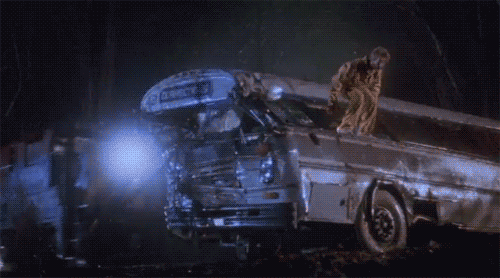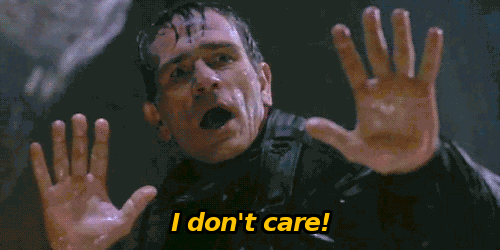Deputy Marshal Samuel Gerard : [briefing all the sheriffs, deputies, police officers, and law enforcement officials surrounding him] “All right, listen up, ladies and gentlemen, our fugitive has been on the run for ninety minutes. Average foot speed over uneven ground, barring injuries, is 4 miles per hour. That gives us a radius of six miles. What I want from each and every one of you is a hard-target search of every gas station, residence, warehouse, farmhouse, henhouse, outhouse and doghouse in that area. Checkpoints go up at fifteen miles. Your fugitive’s name is Dr. Richard Kimble. Go get him.”
There are a couple of movies that I simply have to watch – whenever they were on. It could be on a TV at the back of a bar and I would watch it. One is The Hunt for Red October. The other is The Fugitive.
Based on a television series from the 1960s, The Fugitive follows Dr. Richard Kimble (Harrison Ford) who is falsely accused of murdering his wife. He escapes custody and has to outwit the team of U.S. Marshals on his trail while trying to catch the real killer.
If I had to choose one film from the 1990s to watch forever, it would be this one – not just because one of the characters and I share a last name. Allow me to make my case:
Harrison Ford is in it. By this point, he was a bona fide star (Star Wars, Indiana Jones) and household name. He runs with his leading man status as an ‘everyman’ in this one. He finds a way to be clever despite being wronged, and represent a fear that we all have – being falsely accused of a crime we didn’t commit. And even while he is trying to clear his name, he saves the lives of at least two characters.

Tommy Lee Jones is the perfect foil as U.S. Marshal Sam Gerard. He is equally smart and savvy. It’s a brilliant choice. The audience doesn’t hate the guy chasing the hero. Gerard is just as dogged as the guy he’s chasing – and just as smart. He has the best one-liners. There is a reason he won the Academy Award for his role.
There is awesome action. The train crash was real and cost about $1mil to film. It was done under controlled conditions with cameras rolling. Harrison Ford busted his Achilles tendon when jumping off the bus before the train hits it. And it bears remembering that all the aerial shots were done before the age of drones.

It has (just about) all the kinds of transportation. Bus, freight train, elevated train, cars with car phones, helicopter, ambulance, tow truck, and gurney. There’s even a rollerblade reference.
It’s funny. There is genuinely good dialogue. It’s sharp, witty and reflective of individual characters. The banter among the U.S. Marshals is some of the best. But ironically one of the most famous lines was actually ad-libbed. When Harrison Ford tells his pursuer, “I didn’t kill my wife,” Tommy Lee Jones made up the response, “I don’t care!”

Chicago. Aside from some rural Illinois scenes, much of the action takes place in the Second City, and it is a key part of the film. From the greening of the river on St. Patrick’s Day, to a chase in laundry room of the Palmer House, to a fight on the iconic elevated train, it’s a Chicago-centric movie.
The music. Scored by James Newton Howard, it features the great saxophonist Wayne Shorter. Unlike some soundtracks from the 80s and 90s, it still holds up as fresh and action-oriented.
There’s a cracking good mystery. Holding it all together is a great whodunit. The audience knows Richard Kimble is innocent but we don’t exactly know who did, or why. We follow the clues that he gathers, hoping that Sam Gerard will put them together as well. The final reveal is pretty great too.
